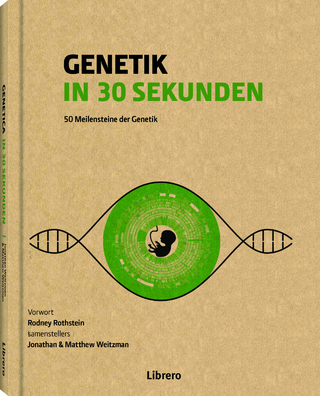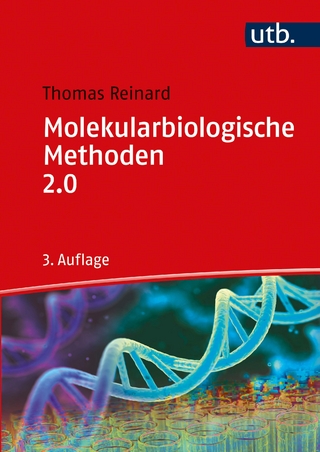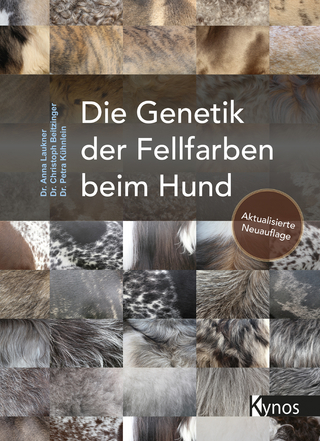
Muscles of Chordates
CRC Press (Verlag)
978-1-138-57123-5 (ISBN)
Key Selling Features:
Has more than 200 high-quality anatomical illustrations, including evolutionary trees that summarize the origin and evolution of all major muscle groups of chordates
Includes data on the muscles of the head and neck and on the pectoral, pelvic, anal, dorsal, and caudal appendages of all extant vertebrate taxa
Examines experimental observations from evolutionary developmental biology studies of chordate muscle development, allowing to evolutionarily link the muscles of vertebrates with those of other chordates
Discusses broader developmental and evolutionary issues and their implications for macroevolution, such as the links between phylogeny and ontogeny, homology and serial homology, normal and abnormal development, the evolution, variations, and birth defects of humans, and medicine.
Rui Diogo is an Associate Professor at Howard University College of Medicine and a member of the Resource Faculty at the Center for the Advanced Study of Hominid Paleobiology at George Washington University. One of the youngest researchers to be nominated as Fellow of the American Association of Anatomists, he won several prestigious awards, being the only researcher to be selected for the first/second place for best article of the year in the top anatomical journal two times in just three years (2013/2015). Author or co-author of more than 100 papers in top journals, such as Nature, and of numerous book chapters, he is the co-editor of three books and the sole or first author of eleven books covering subjects as diverse as fish evolution, chordate development, and human medicine and pathology, including a book adopted at medical schools worldwide, "Learning and understanding human anatomy and pathology: an evolutionary and developmental guide for medical students. Julia Molnar is a Research Associate in the College of Medicine at Howard University in the Department of Anatomy. Janine Ziermann is an Assistant Professor in the Department of Anatomy at Howard University's College of Medicine.
Preface
About the Authors
Acknowledgments
Chapter 1 Introduction
Chapter 2 Methodology
Chapter 3 Non-Vertebrate Chordates and the Origin of the Muscles of Vertebrates
Chapter 4 General Discussion on the Early Evolution of the Vertebrate Cephalic Muscles
Chapter 5 Cephalic Muscles of Cyclostomes and Chondrichthyans
Chapter 6 Cephalic Muscles of Actinopterygians and Basal Sarcopterygians
Chapter 7 Development of Cephalic Muscles in Chondrichthyans and Bony Fishes
Chapter 8 Head and Neck Muscle Evolution from Sarcopterygian Fishes to Tetrapods, with a Special Focus
on Mammals
Chapter 9 Head and Neck Muscles of Amphibians
Chapter 10 Head and Neck Muscles of Reptiles
Chapter 11 Development of Cephalic Muscles in Tetrapods
Chapter 12 Pectoral and Pelvic Girdle and Fin Muscles of Chondrichthyans and Pectoral-Pelvic Nonserial Homology
Chapter 13 Pectoral and Pelvic Muscles of Actinopterygian Fishes
Chapter 14 Muscles of Median Fins and Origin of Pectoral vs. Pelvic and Paired vs. Median Fins
Chapter 15 Development of Muscles of Paired and Median Fins in Fishes
Chapter 16 Pectoral and Pelvic Appendicular Muscle Evolution from Sarcopterygian Fishes to Tetrapods
Chapter 17 Forelimb Muscles of Tetrapods, Including Mammals
Chapter 18 Forelimb Muscles of Limbed Amphibians and Reptiles
Chapter 19 Hindlimb Muscles of Tetrapods and More Insights on Pectoral–Pelvic Nonserial Homology
Chapter 20 Development of Limb Muscles in Tetrapods
References
Index
| Erscheinungsdatum | 02.08.2018 |
|---|---|
| Zusatzinfo | 73 Tables, black and white; 88 Illustrations, color; 118 Illustrations, black and white |
| Verlagsort | London |
| Sprache | englisch |
| Maße | 210 x 280 mm |
| Gewicht | 2041 g |
| Themenwelt | Naturwissenschaften ► Biologie ► Genetik / Molekularbiologie |
| Naturwissenschaften ► Biologie ► Zoologie | |
| ISBN-10 | 1-138-57123-7 / 1138571237 |
| ISBN-13 | 978-1-138-57123-5 / 9781138571235 |
| Zustand | Neuware |
| Informationen gemäß Produktsicherheitsverordnung (GPSR) | |
| Haben Sie eine Frage zum Produkt? |
aus dem Bereich


